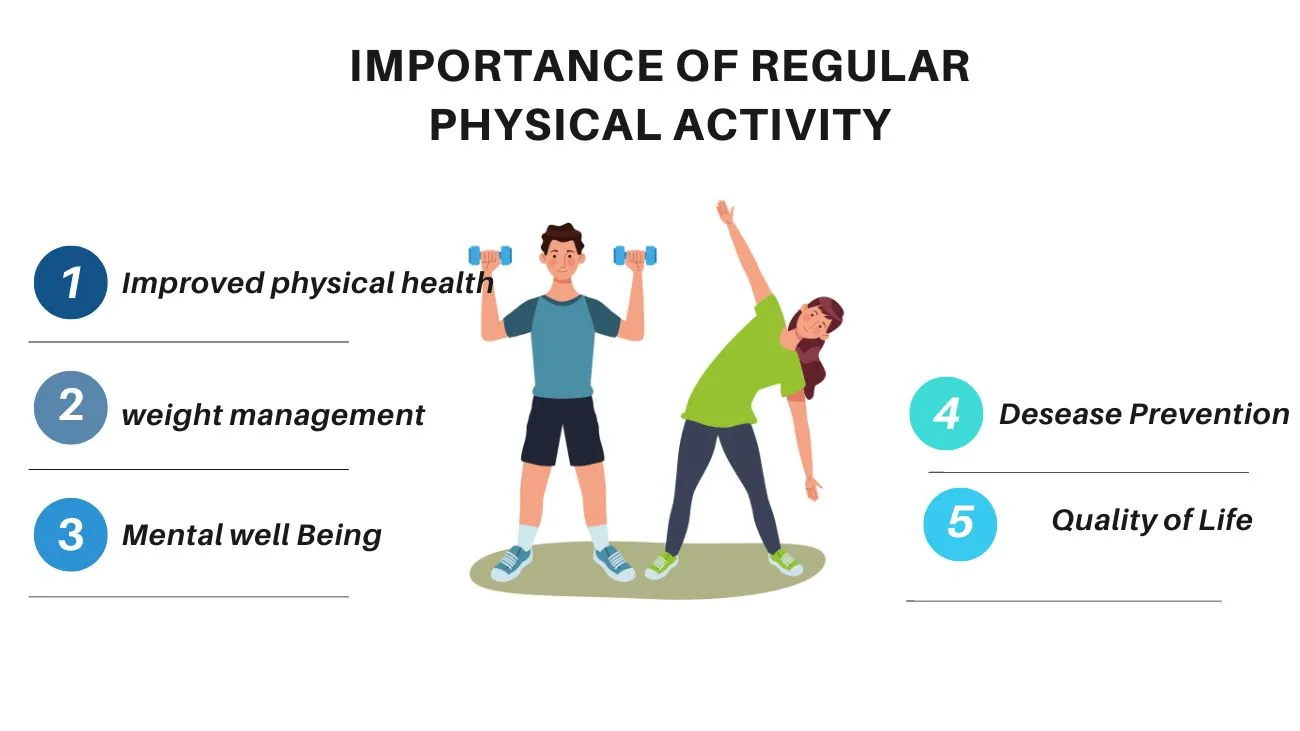An Effective Method for Managing Blood Sugar Levels is the Sugar Control Diet.
Introduction
Maintaining stable blood sugar levels is essential for overall health and well-being. Excessive sugar consumption can lead to various health problems, including diabetes, obesity, and heart disease. Adopting a sugar control diet effectively manages blood sugar levels and promotes a healthy lifestyle. In this article, we will explore the principles of a sugar control diet, provide practical tips for implementation, and shed light on its numerous benefits.
Table of contents
- Introduction
- Understanding Blood Sugar Levels
- Action plan and chart for low blood sugar
- Recheck blood sugar levels
- The Role of Sugar in Health Issues
- The Basics of a Sugar Control Diet
- Healthy Meal Planning for Sugar Control Diet
- Healthy Sugar Substitutes
- The Importance of Regular Physical Activity
- Monitoring Blood Sugar Levels
- Benefits of Sugar Control diet
- FAQ’s for Sugar Control Diet
Understanding Blood Sugar Levels
Before diving into the specifics of a sugar control diet, it is crucial to understand the concept of blood sugar levels. Blood sugar, or glucose, is the primary source of energy for our body’s cells. However, consistently high blood sugar levels can be detrimental to our health. In order to promote healthy body processes, it is crucial to keep blood sugar levels regulated.
Action plan and chart for low blood sugar
A low blood sugar chart and action plan are essential tools for individuals who experience episodes of low blood sugar, also known as hypoglycemia. These resources help in recognizing the symptoms of low blood sugar and provide guidance on how to manage and prevent further complications. Here is an example of a low blood sugar chart along with an accompanying action plan:
Low Blood Sugar Chart:
| Blood Sugar Level (mg/dL) | Classification |
|---|---|
| Below 70 | Hypoglycemia |
| 70 – 90 | Borderline Low |
| 90 – 120 | Normal |
Action Plan for Managing Low Blood Sugar:
1. Recognize the Symptoms:
- Shakiness or tremors
- Sweating
- Hunger
- Dizziness or lightheadedness
- Confusion or difficulty concentrating
- Irritability or mood changes
- Weakness or fatigue
2. Immediate Steps:
Consume 15 grams of fast-acting carbohydrates, such as:
- Glucose tablets or gel
- Fruit juice (½ cup)
- Regular soda (not diet)
- Hard candies (5-7 pieces)
- Table sugar (1 tablespoon)
Wait for 15 minutes.
Recheck blood sugar levels
If Blood Sugar Remains Low:
- Repeat step 2 (15 grams of fast-acting carbohydrates).
- Wait for 15 minutes and recheck blood sugar levels.
- If symptoms persist or worsen, seek medical assistance.
Once Blood Sugar Stabilizes:
- Consume a snack or meal that combines protein, healthy fats, and complex carbohydrates to prevent a rapid drop in blood sugar levels.
- Examples include a small sandwich with lean protein, whole grain crackers with nut butter, or yogurt with nuts and berries.
Preventing Low Blood Sugar:
- Maintain regular meal and snack times.
- Balance meals with a combination of carbohydrates, proteins, and healthy fats.
- Avoid skipping meals.
- Monitor blood sugar levels regularly.
- Adjust diabetes medications, if necessary, in consultation with a healthcare professional.
The Role of Sugar in Health Issues
Excessive sugar consumption, in the form of added sugars, in especially, has been linked to various health problems. Consuming sugary foods and beverages leads to rapid spikes in blood sugar levels, placing a strain on the body’s insulin response. Over time, this may result in insulin resistance, diabetes, weight gain, and cardiovascular issues.

The Basics of a Sugar Control Diet
A sugar control diet focuses on minimizing the intake of added sugars and choosing foods with a low glycemic index. Here are some fundamental principles to follow when adopting a sugar control diet:
Understand Added Sugars:
Learn to differentiate between naturally occurring sugars and added sugars in foods and beverages. Added sugars are those that are added during processing or preparation and contribute to excessive sugar intake.
- Read Food Labels: Develop the habit of reading food labels carefully. Look for hidden sources of added sugars such as high fructose corn syrup, maltose, sucrose, and other sweeteners. Avoid products with high amounts of added sugars.
- Choose Whole Foods: Opt for whole, unprocessed foods whenever possible. Fruits, vegetables, lean proteins, whole grains, and legumes are nutritious options that provide essential nutrients without excessive added sugars.
- Limit Sugary Drinks: Sugary beverages like soda, fruit juices, energy drinks, and sweetened coffees can contain high amounts of added sugars. Choose water, unsweetened tea, or infused water as healthier alternatives.
Opt for Low-Glycemic Foods:
Select foods with a low glycemic index (GI) to help regulate blood sugar levels. Low-GI foods include non-starchy vegetables, whole grains, and legumes, which release sugar into the bloodstream more slowly.
- Control Portion Sizes: Be mindful of portion sizes to manage sugar intake effectively. Even healthy foods can contribute to high sugar consumption if consumed excessively. Practice portion control to maintain a balanced diet.
- Incorporate Healthy Fats and Protein: Including healthy fats and protein in your meals can help stabilize blood sugar levels and promote satiety. Good sources of healthy fats include avocados, nuts, seeds, and olive oil, while lean meats, poultry, fish, and plant-based proteins are ideal protein sources.
- Snack Smartly: Choose nutritious snacks that are low in added sugars. Opt for options like fresh fruit, Greek yogurt, nuts, or vegetables with hummus instead of processed snacks or sweets.
Plan Meals and Prep Ahead:
Meal planning and preparation can help you stay on track with your sugar-control diet. Plan your meals in advance, create a grocery list, and prep ingredients to make healthy choices easier throughout the week.
- Stay Hydrated: Adequate hydration is important for overall health and can help reduce cravings for sugary foods. Drink plenty of water throughout the day and limit your consumption of sugary beverages.
- Practice Mindful Eating: Be mindful of your eating habits and pay attention to hunger and fullness cues. Slow down during meals, savor the flavors, and listen to your body’s signals to prevent overeating and unnecessary sugar consumption.
- Seek Support and Education: Consider consulting with a registered dietitian or healthcare professional who specializes in sugar control diets. They can provide personalized guidance, support, and education to help you achieve your goals.
Limiting Added Sugars
To begin with, it is of utmost importance to decrease the consumption of food and beverages that contain added sugars. Examples of common sources of added sugars include sugary drinks, candies, baked goods, and processed snacks. By carefully examining food labels and selecting products that have minimal or no added sugars, you can effectively reduce your daily intake of sugar.
Choosing Low Glycemic Index Foods
The glycemic index (GI) is a measure of how quickly a particular food raises blood sugar levels. Foods with a low GI value release glucose more slowly, preventing rapid spikes and crashes. Incorporating low-GI foods such as whole grains, legumes, non-starchy vegetables, and fruits into your diet can help maintain steady blood sugar levels.
A Vital Role of Blood Sugar Levels
Fiber plays a vital role in regulating blood sugar levels. It slows down the absorption of glucose, preventing sudden blood sugar spikes. Include plenty of fiber-rich foods in your diet, such as whole grains, nuts, seeds, vegetables, and berries. These not only help control blood sugar but also promote digestive health.
Building a Balanced Plate
When following a sugar control diet, it’s important to create balanced meals that provide a variety of nutrients. Aim to fill half of your plate with non-starchy vegetables like leafy greens, broccoli, and peppers. Allocate a quarter of lean proteins such as poultry, fish, tofu, or legumes. The remaining quarter should consist of whole grains or starchy vegetables like sweet potatoes or quinoa.

Healthy Meal Planning for Sugar Control Diet
Effective meal planning is a key aspect of a successful sugar-control diet. Plan your meals to ensure you have nutritious options readily available and avoid impulsive food choices. Include a combination of lean proteins, healthy fats, complex carbohydrates, and fiber-rich foods in each meal. this helps maintain stable blood sugar levels throughout the day.
- Include Non-Starchy Vegetables: Make non-starchy vegetables the foundation of your meals. These include leafy greens, broccoli, cauliflower, bell peppers, zucchini, and asparagus. They are low in calories and carbohydrates while providing essential nutrients and fiber.
- Opt for Lean Proteins: Choose lean sources of protein to balance your meals. Good options include skinless poultry, fish, tofu, legumes (such as lentils and beans), and Greek yogurt. Protein helps to stabilize blood sugar levels and promotes satiety.
- Emphasize Whole Grains: Incorporate whole grains in your meal planning. They provide fiber, which slows down digestion and helps regulate blood sugar. Examples of whole grains include quinoa, brown rice, whole wheat bread, oats, and barley.
- Healthy Fat Choices: Include healthy fats in your meals to add flavor and increase satiety. Opt for sources like avocados, nuts, seeds, olive oil, and fatty fish (such as salmon or sardines). These fats provide essential nutrients and can help stabilize blood sugar levels.
- Mindful Carbohydrate Portions: Choose your carbohydrates wisely and control portions. Include complex carbohydrates like sweet potatoes, whole grain pasta, and lentils. Be mindful of the quantity to avoid excessive sugar intake. Balancing carbohydrates with protein and fiber can help manage blood sugar levels.
Healthy Sugar Substitutes
When reducing sugar intake, it’s natural to crave something sweet. Thankfully, there are healthier alternatives to satisfy your sweet tooth. Some natural sugar substitutes include stevia, monk fruit, and erythritol. These alternatives provide sweetness without the same impact on blood sugar levels.
The Importance of Regular Physical Activity
Physical activity is an integral part of a sugar control diet. Engaging in regular exercise helps improve insulin sensitivity and promotes weight management. Incorporate both cardiovascular exercises, such as brisk walking or cycling, and strength training activities into your routine. Aim for at least 150 minutes of moderate-intensity aerobic activity each week.
| Importance of Regular Physical Activity |
|---|
| Improved Physical Health |
| Weight Management |
| Mental Well-being |
| Disease Prevention |
| Enhanced Quality of Life |
Even though overcoming sugar cravings can be difficult, it is doable with a few techniques. First, make sure your meals are balanced and contain enough nutrients. This lessens the chance of rapid reductions in blood sugar, which frequently lead to cravings. Find healthier substitutes for your preferred sugary foods, such as fruit smoothies or dark chocolate. Your taste buds can be retrained by gradually reducing your sugar intake.
Monitoring Blood Sugar Levels
Monitoring your blood sugar levels on a regular basis is essential for effectively managing a sugar control diet. this can be done with a blood glucose monitor, which delivers reliable readings of your current blood sugar level. Tracking your levels helps you understand how different foods and lifestyle choices impact your blood sugar and enables you to make necessary adjustments.
Benefits of Sugar Control diet
Adopting a sugar control diet offers numerous benefits for your overall health and well-being. Some notable advantages include:
- Improved blood sugar management
- Weight loss or maintenance
- Reduced risk of developing type 2 diabetes
- Enhanced cardiovascular health
- Increased energy levels
- Better mood and mental clarity
Improved Blood Sugar Management: One of the primary benefits of a sugar control diet is better blood sugar management. By reducing the consumption of added sugars and focusing on balanced meals, individuals can stabilize their blood sugar levels and prevent spikes and crashes. This is particularly important for individuals with diabetes or those at risk of developing diabetes.
Weight Management: A sugar control diet can aid in weight management. Foods high in added sugars are often calorie-dense and lack essential nutrients. By limiting sugary foods and beverages, individuals can reduce their overall calorie intake, promote a healthy weight, and prevent weight-related health issues such as obesity.
Reduced Risk of Chronic Diseases: Following a sugar control diet can help reduce the risk of chronic diseases. Excessive sugar consumption has been linked to conditions such as heart disease, type 2 diabetes, certain types of cancer, and metabolic syndrome. By limiting add sugars individuals can lower their risk of developing these diseases and improve their overall health.
Increased Energy Levels: High-sugar foods and beverages can lead to energy crashes and fatigue due to the rapid rise and fall of blood sugar levels. A sugar control diet focuses on nourishing foods that provide sustained energy, such as complex carbohydrates, lean proteins, and healthy fats. This can result in increased energy levels and improved overall vitality.
Enhanced Nutritional Intake: A sugar control diet encourages the consumption of nutrient-dense foods. By reducing sugary treats and processed snacks, individuals can replace them with whole foods rich in vitamins, minerals, fiber, and antioxidants. This promotes optimal nutrition and supports overall well-being.
Better Dental Health: Excessive sugar intake is associated with dental issues such as tooth decay and cavities. By following a sugar control diet and minimizing the consumption of sugary foods and drinks, individuals can maintain better oral health and reduce the risk of dental problems.
Balanced Mood and Mental Well-being: The consumption of high-sugar foods can lead to fluctuations in blood sugar levels, which can affect mood and energy levels. By adopting a sugar control diet, individuals can experience more stable moods, increased focus, and improved mental well-being.
Improved Skin Health: High sugar intake has been linked to skin problems such as acne and premature aging. Individuals may experience clearer skin and improved skin health by reducing sugar consumption.
FAQ’s for Sugar Control Diet
Yes, you can still enjoy desserts while following a sugar control diet. Opt for healthier dessert options that use natural sweeteners or low-sugar alternatives. There are lots of delectable recipes out there that call for things like fruit, bittersweet chocolate, or sugar replacements.
Absolutely! A controlled diet is highly beneficial for individuals with diabetes. It helps regulate blood sugar levels and reduces the risk of complications associated with the condition. However, consulting with a healthcare professional or a registered dietitian for personalized guidance is essential.
The time it takes to see results may vary from person to person. Some individuals may experience blood sugar and energy levels improvements within a few weeks. However, long-term adherence to a sugar control diet is necessary to achieve sustained benefits.
Artificial sweeteners can be used as an alternative to sugar in moderation. However, it’s important to be mindful of their potential side effects and choose natural sugar substitutes whenever possible.
Yes, a sugar-control diet can help you lose or maintain your weight. Limiting your consumption of high-calorie sugary foods and beverages generates a calorie deficit, which is necessary for losing excess weight. A sugar-control diet, when combined with regular exercise, can help you achieve and maintain a healthy weight.
Conclusion
Embracing a sugar control diet is a proactive step toward maintaining stable blood sugar levels and promoting overall health. By limiting added sugars, choosing low GI foods, and incorporating regular exercise, you can effectively manage your blood sugar levels and reduce the risk of associated health issues. Remember, small changes can make a big difference in your well-being.




Sugar Control Diet To Managing Your Blood Sugar…
[…] Healthy Meal Planning for Sugar Control Diet like Healthy fats, complex carbohydrates, fiber-rich foods in each meal, and Carbohydrate Protein […]
July 11, 2023 at 11:03 am
vorbelutr ioperbir
An impressive share, I just given this onto a colleague who was doing a little analysis on this. And he in fact bought me breakfast because I found it for him.. smile. So let me reword that: Thnx for the treat! But yeah Thnkx for spending the time to discuss this, I feel strongly about it and love reading more on this topic. If possible, as you become expertise, would you mind updating your blog with more details? It is highly helpful for me. Big thumb up for this blog post!
September 5, 2023 at 2:17 am
Full Guide For Starting Yoga for Diabetes Management
[…] setting out on any new work-out daily practice, particularly if you have an ailment like diabetes, counseling your medical care provider is fundamental. They can give […]
November 8, 2023 at 12:38 pm
Know Differences Between Diabetes Mellitus & Diabetes Insipidus
[…] An Effective Method for Managing Blood Sugar Levels is the Sugar Control Diet. […]
November 21, 2023 at 12:56 pm